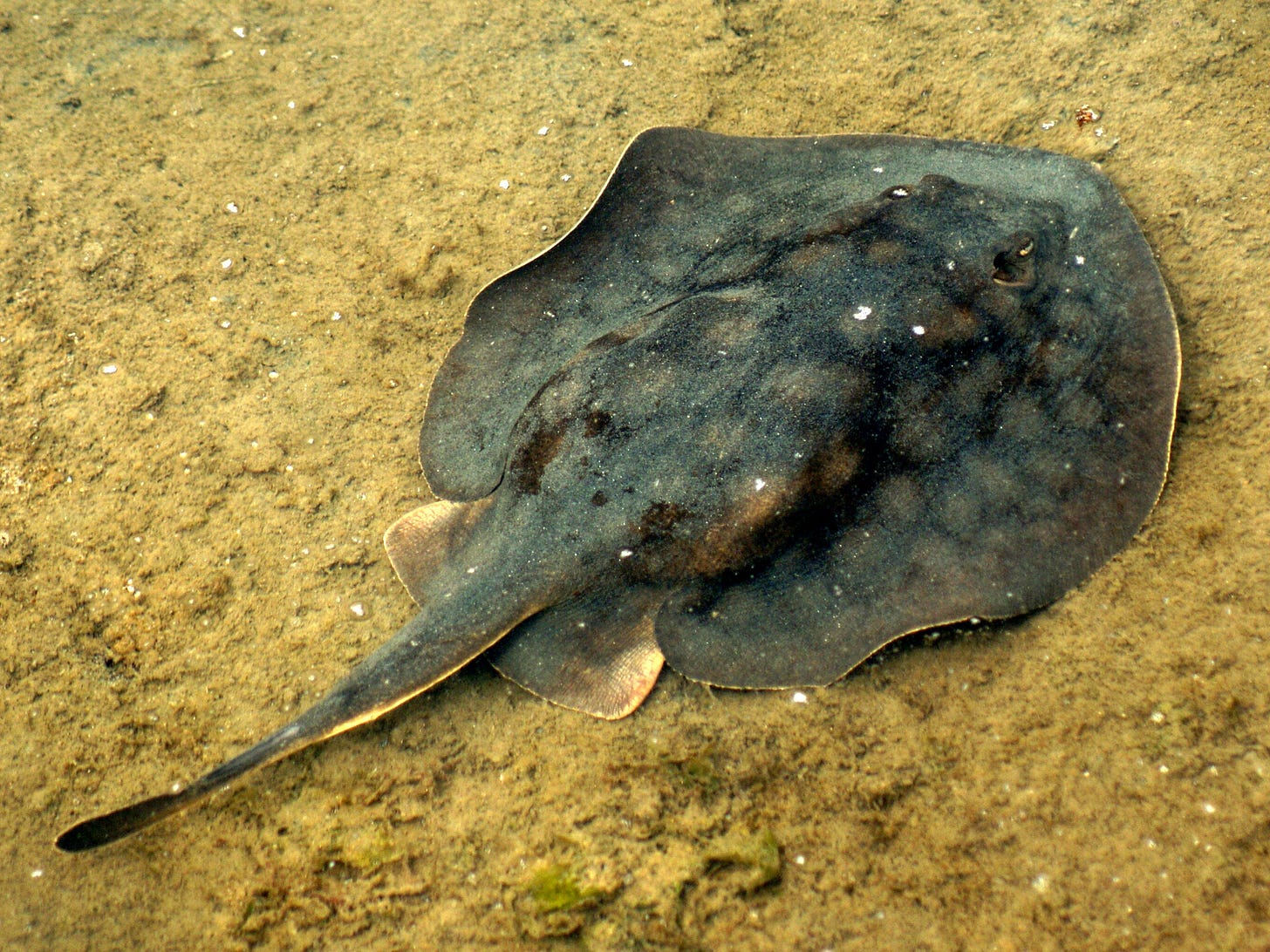Why does hot water help stingray stings?
Ask a non-surfer what animal they're most afraid of in the water, and you'll likely hear "sharks." Ask a surfer, and you'll likely get "stingrays," those flat bastards. In Southern California, these electric pancake devils are primarily the round stingray (Urobatis halleri).
Stingrays are a type of cartilaginous fish, meaning their skeletal structure is primarily made of cartilage instead of bone - like sharks. Both of these groups of animals date back to dinosaur times, with stingrays probably annoying anything that stepped on them back then too.
With relatively small scale-like teeth made for crunching the shells of their prey, the stingray relies on its barbed tail for defense. And lucky for everyone, their barbs deliver a very painful venom into attackers, even if you didn't mean to step on it.

Stingrays are rather unique in that their venom is stored within tissue cells, rather than in a gland. This toxin mixes with the mucous layer on the outside of the barb to create a potent cocktail. The barbed tails are covered in a thin layer of skin, often called a sheath. When the barb enters, say the bottom of your foot, the sheath tears and venom enters your tissue, leading to intense, radiating pain. Pain that just keeps getting worse until you find yourself some hot water.
This venom contains several proteins, primarily heat-sensitive enzymes called peptides. Evolution likely engineered these compounds to convince predators (and unwitting surfers) that messing with stingrays isn't worth the trouble.
So why does hot water help? Proteins have a specific three-dimensional structure that allows them to function properly. If you mess with their folding, the protein stops working as intended.

When proteins are exposed to heat beyond their stable temperature range, their structure begins to break down - a process called denaturation. The heat essentially unravels those precise folds, rendering the protein inactive. The same chemistry happens when you fry an egg and watch the clear stuff turn white.
Stingray venom contains thermolabile proteins, meaning they break down at temperatures higher than normal body temperature but lower than what would damage human tissue. Water between 110-115°F (43-46°C) is hot enough to denature these proteins without causing burns to your skin.
For all the surfers who've done the one-legged hop to the lifeguard tower, there's good news: modern understanding of stingray venom has led to improved treatments. They have buckets of hot water.
The stingrays don't want to sting you any more than you want to be stung. If you want to avoid this whole dance, slide those feet along the bottom instead of stepping down. Better yet, start paddling early and control your board at the end of a wave so you don’t have to touch down. Make sure to follow up with a doctor, these punctures are likely to get infected and often have broken pieces of the barb remaining behind.
Further Reading:



